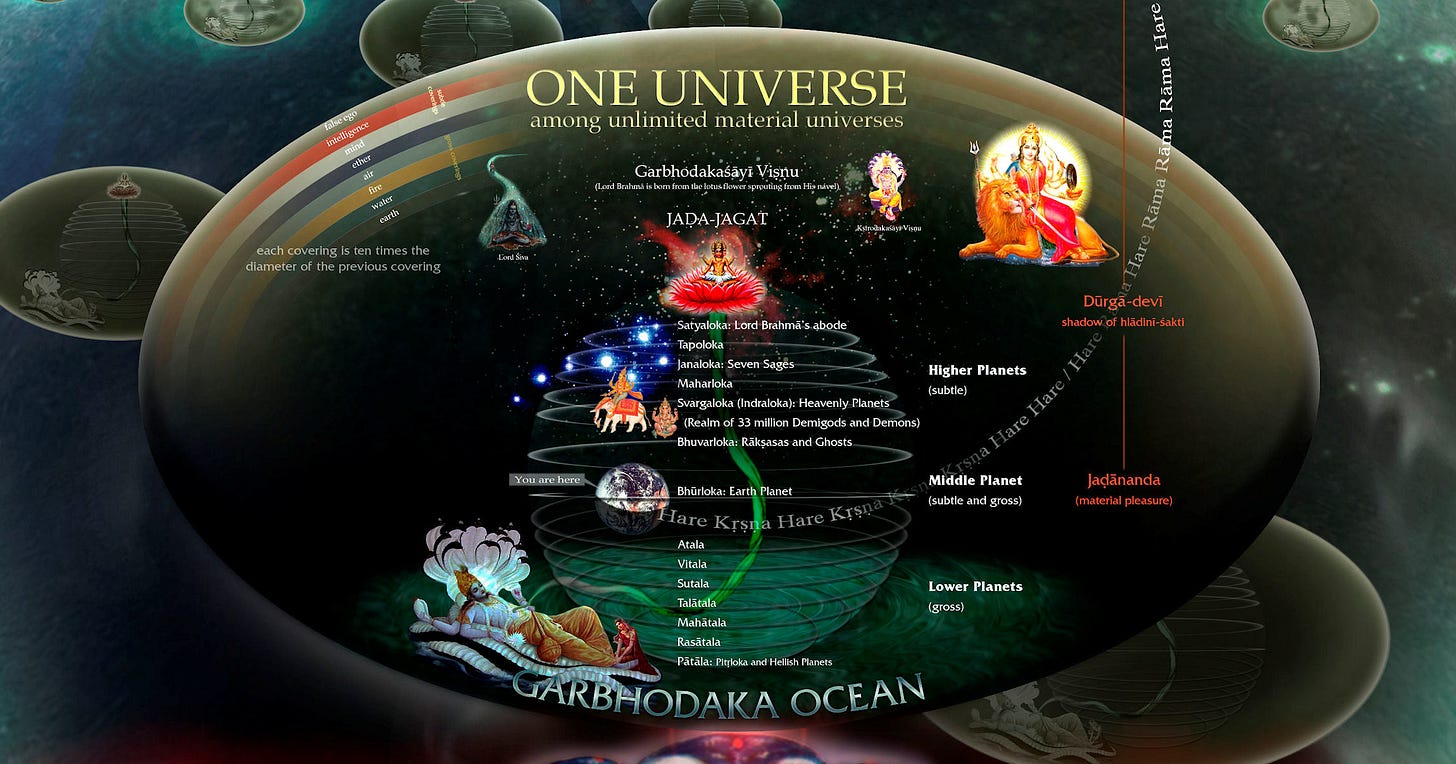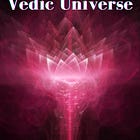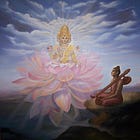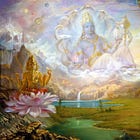The enigmatic description of the universe from the 5th canto of Srimad Bhagavatam
Does the idea of the giant flat island of Jambūdvīpa, balanced by four elephants dividing the universe in two vertical halves, raise some doubts in your mind?
Did you ever have doubts about the way the Srimad Bhagavatam describes the universe? Does the idea of the giant flat island of Jambūdvīpa, balanced by four elephants dividing the universe in two vertical halves, raise some doubts in your mind? Do statements from Srila Prabhupada that men never went to the moon ever leave you a little bit confused?
Many devotees get a few doubts when studying the 5th canto of Srimad Bhagavatam, as well as different passages from Srila Prabhupada where the cosmological model described in the Srimad Bhagavatam, as well as other Puranas, is described.
The problem with the cosmology of the Puranas is that it offers a description of the world that is different from our sense perception. It's not easy to understand and even harder to harmonize with recent cosmological discoveries. Many read the 5th canto of the Srimad Bhagavatam and get into serious doubts. Do I need to believe that the earth is flat and that men never went to the moon to be a devotee of Krsna?
When the first Apollo mission landed, many were skeptical that they really went to the moon. The quality of the footage was quite bad, and the dispute with the USSR and other factors raised a lot of questions for a lot of people. Many started to wonder if that first mission was not just some kind of hoax. Prabhupada himself wrote a letter raising a number of questions about the landings.
However, with the subsequent Apollo Missions, as well as probes from the USSR, Europe, China, and India, the evidence started to mount. The same evidence was verified by different sources, making it very difficult to contest that men indeed were going to this piece of rock orbiting our planet that we call the Moon.
Similarly, it's very easy to prove that the Earth we can observe with our senses is not flat. Greeks did so more than two thousand years ago using simple experiments. Especially nowadays, when so much information is just a web search away, it's becoming increasingly difficult to just dismiss all the scientific information in this regard as hoaxes.
The main point is that the descriptions of the Srimad Bhagavatam are quite fascinating, but at the same time highly metaphorical. Making sense of it is very challenging, but also very rewarding. Once we go beyond the superficialities, the model of the Universe described in the Vedas offers a quite compelling explanation of the metaphysical structure of the Universe, with multiple dimensions, cosmic passages, and mystical features, based not on matter and physical laws, but different levels of consciousness.
The model described in the Puranas thus contains not only the keys for better understanding the complexities and subtleties of our universe, going much further than the reductionist model studied in modern science, but also for elevating our consciousness.
The first point to understand is that the view of the cosmos given by modern science is based on sense perception, or what we can observe using our vision and other senses. It doesn’t matter if one tries to observe the universe using his naked eye or a telescope: one will still be limited by his senses and intelligence. The Vedas give a similar description of the gross universe, according to the way we perceive with our senses, in the Jyotiṣ-śāstras. There, a view of the universe very similar to modern science is given. The question is that the Vedas offer something more.
In the model offered in the Srimad Bhagavatam, our universe is organized in several levels of planetary systems, resembling disks one on top of the other. In the middle, we have Earth and other intermediary planetary systems. In the lower half, we have the lower planetary systems, and in the upper half, we have the higher planetary systems. This view of the universe is, of course, radically different from what we can observe when we look at the sky. The point is that the Puranas describe the Universe from the point of view of superior beings, who have different sets of senses and thus perceive reality in a completely different way than we do. This is the delicate point behind the declarations of Srila Prabhupada that man never went to the moon and other points. No ordinary human being can visit the celestial moon inhabited by demigods, but at the same time, nothing prevents us from visiting the piece of rock that orbits our planet. The Vedas thus describe how the same object can be manifested in different forms in different levels of reality, and we can access one or the other according to our level of consciousness.
It may sound strange that different beings can have such different conceptions of reality, but this is something that can be observed even on our own planet. Most carnivorous animals see in black and white, while we see in color. Butterflies can see ultraviolet light that is invisible to us, while certain animals can’t see at all, being guided only by smell. In fact, our concept of reality is based on electrical signals our brain receives from our eyes, nose, ears, etc. If one were to receive a different set of senses, one would perceive reality differently.
Apart from physical differences, there is also a difference in consciousness. The concept of reality of an ant is rudimentary if compared to a human being. Similarly, our concept of reality is very limited compared to the view of more evolved beings.
Our universe is composed of different dimensions, and space is organized in different ways according to the dimension one is living in. Not only is reality much more complex than we can perceive with our senses, but different beings have different sets of senses and can perceive the universe in different ways. Just like the conception of reality of a human is much more evolved than the concept of reality of an ant, superior beings perceive the universe in a very different way than we do. For the demigods, everything is much closer, and they can travel from one planet to the other the same way we visit different cities.
One can "tune-up" these different dimensions according to the particular set of senses he got, which is in turn determined by his consciousness in previous lives. Because of our consciousness, we assume a particular type of body, on a certain planet, and have access to a certain level of reality. In our case, we live in a gross dimension, where the universe appears cold and almost vacant, with the stars and planets very distant from each other and practically inaccessible to us. We are essentially imprisoned on our little planet by the law of gravity. Even if we send some probes or astronauts, at an exorbitant cost, to investigate what is beyond, we can't find anything very interesting outside.
I have been studying the Vedas, and especially the books of Srila Prabhupada, since 1992, and the enigmatic descriptions of the Universe offered in the 5th canto of the Srimad Bhagavatam are a topic that always intrigued me. However, over the years, I started to better understand it, helped by the research of other devotees. Srila Prabhupada gave us the mission of understanding and explaining the cosmological model given in the Srimad Bhagavatam, and I feel that collectively we a getting closer to a proper understanding of it in our Krsna Conscious society.
Some time ago, I wrote a book on this topic, sharing what I learned in almost 30 years of studying this topic. If you are interested, you can read it and download it for free, just like the other books I'm publishing: The Intriguing Vedic Universe
If you really appreciate it, you can even give a small donation to support the production of the next books :-) Soon we will also study this topic in detail, going through the descriptions of the 5th canto in the Bhagavatam course, which is currently going on. If you are interested, you are also welcome to join the course.
If you read this article to the end, give it a like or write a commentary. This makes Substack recommend it to more people.
Read also:






Hare Krishna Prabhu ji. Very informative and enlightening article. Prabhu i want to join the bhagvatam course? How can I join the course?